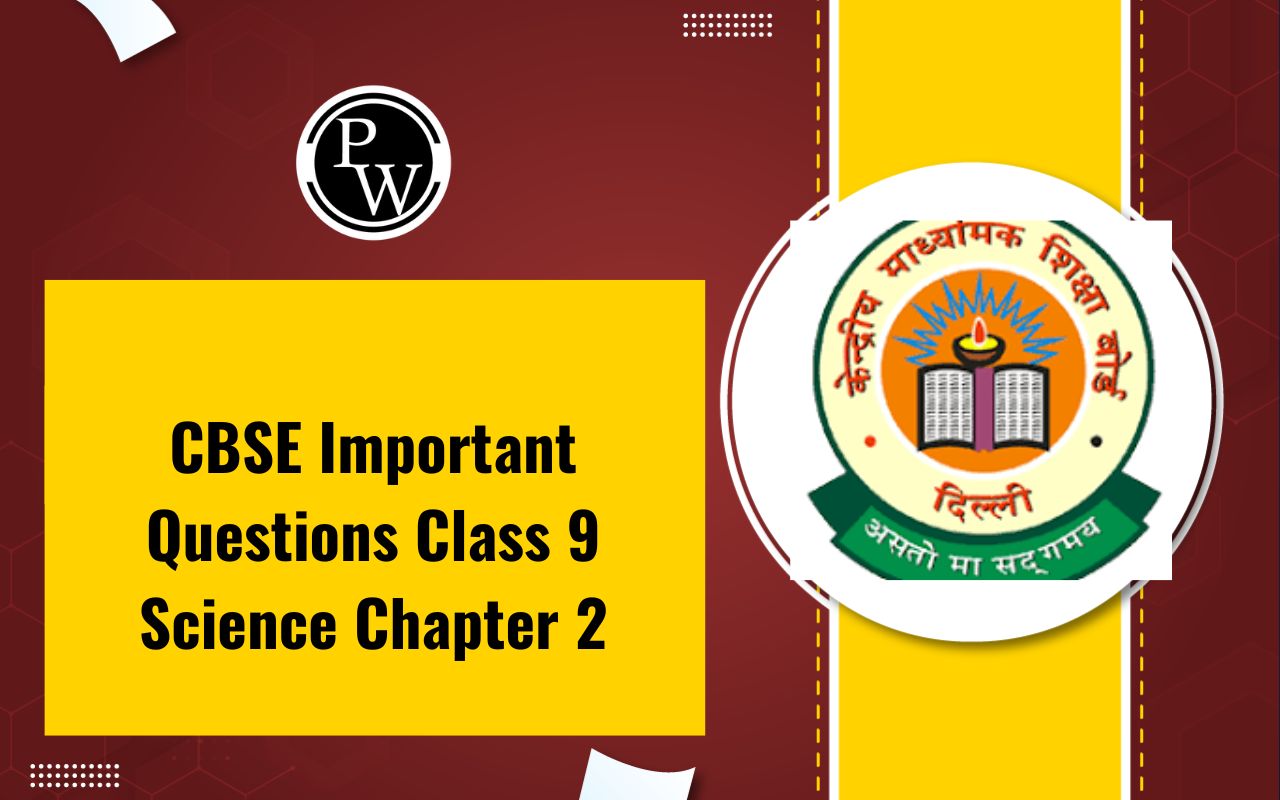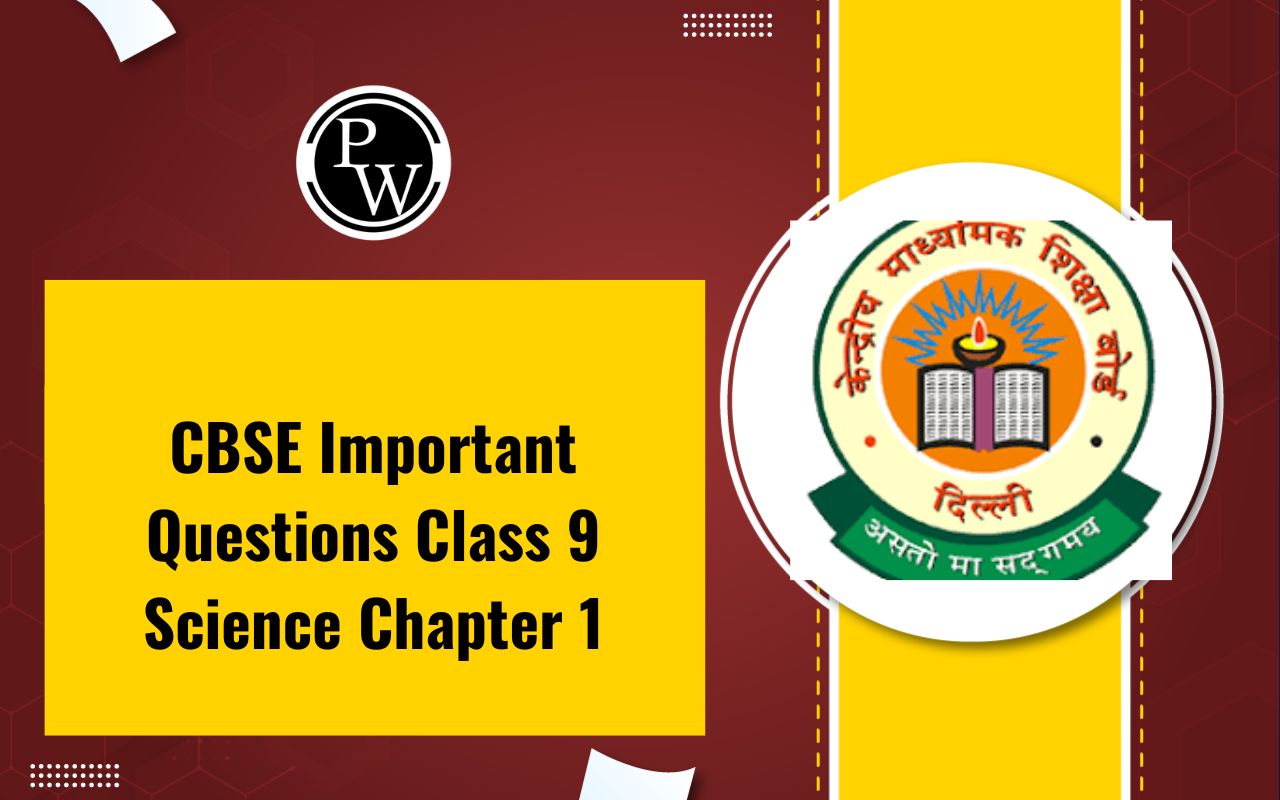
CBSE Class 9 Science Notes: CBSE Class 9 Science notes are like a guidebook that helps students understand science topics easily. It covers everything from the basics of physics, chemistry, and biology to how science affects our daily lives.
The notes are written in a simple way, with pictures and examples to make learning fun. They help students understand complex concepts by breaking them down into smaller, easier-to-understand parts. With these notes, students can conduct experiments, study real-life examples, and learn how science is used in different fields. Overall, CBSE Class 9 Science notes make learning science more enjoyable and understandable for students.CBSE Class 9 Science Notes Overview
CBSE Class 9 Science notes from Physics Wallah are easy-to-understand summaries of science topics taught in school. These notes are created by subject experts to make learning simple and enjoyable for students. They cover everything from physics, chemistry, to biology in a clear and organized way. With helpful explanations, diagrams, and examples, these notes help students understand science concepts better. They also show how these concepts are applied in real life. In short, CBSE Class 9 Science notes from Physics Wallah are great resources to improve understanding and do well in exams.CBSE Class 9 Science Notes Chapter-wise
Below are the chapter-wise notes available for CBSE Class 9 Science:| CBSE Science Notes For Class 9 Chapter wise |
| Chapter 1 – Matter in Our Surroundings |
| Chapter 2 – Is Matter Around Us Pure? |
| Chapter 3 – Atoms and Molecules |
| Chapter 4 – Structure of the Atom |
| Chapter 5 – The Fundamental Unit of Life |
| Chapter 6 – Tissues |
| Chapter 7 – Motion |
| Chapter 8 – Force and Laws of Motion |
| Chapter 9 – Gravitation |
| Chapter 10 – Work and Energy |
| Chapter 11 – Sound |
| Chapter 12 – Improvement in Food Resources |
CBSE Class 9 Science Notes Chapter-wise Notes Description
Here are brief descriptions of each chapter in CBSE Class 9 Science:Chapter 1 – Matter in Our Surroundings: This chapter introduces the concept of matter and its various states - solid, liquid, and gas. It explores physical properties of matter such as density, solubility, and compressibility. Students learn about changes of state like melting, freezing, evaporation, and condensation, and understand the factors affecting these changes.
Chapter 2 – Is Matter Around Us Pure?: Here, students learn the classification of matter into elements, compounds, and mixtures. They learn about different types of mixtures, including solutions, colloids, and suspensions. The chapter covers methods for separating mixtures based on differences in physical properties like solubility, boiling point, and magnetic properties.
Chapter 3 – Atoms and Molecules: Students are introduced to the fundamental building blocks of matter - atoms and molecules. They learn about the laws of chemical combination and the concept of atoms and molecules with examples. The chapter explains the difference between atoms and molecules and introduces chemical formulas and equations.
Chapter 4 – Structure of the Atom: The structure of atoms, including the discovery of subatomic particles - electrons, protons, and neutrons. Students learn about the Bohr's model of the atom, atomic number, mass number, and isotopes. The concept of valency and its significance in chemical reactions is also covered.
Chapter 5 – The Fundamental Unit of Life: In this chapter, students explore the basic structural and functional unit of living organisms - the cell. They learn about the discovery of cells, cell theory, and the differences between plant and animal cells. The structure and functions of cell organelles such as nucleus, cytoplasm, cell membrane, mitochondria, and chloroplasts are discussed.
Chapter 6 – Tissues: Here, students study the concept of tissues, which are groups of cells with similar structure and function. They learn about the different types of plant tissues (meristematic and permanent) and animal tissues (epithelial, connective, muscular, and nervous). The chapter covers the structure and functions of each tissue type.
Chapter 7 – Motion: This chapter introduces the concept of motion and its various types, including uniform and non-uniform motion. Students learn about scalar and vector quantities, distance, displacement, speed, velocity, and acceleration. The graphical representation of motion through distance-time and velocity-time graphs is also covered.
Chapter 8 – Force and Laws of Motion: Students learn the concept of force and its effects on motion. They learn about Newton's laws of motion - the law of inertia, the relationship between force and acceleration, and action-reaction pairs. The chapter covers momentum, impulse, and the conservation of momentum.
Chapter 9 – Gravitation: Here, students learn about the force of gravitation and its effects on objects on the Earth's surface. They study Newton's law of universal gravitation, gravitational force, mass, and weight. The chapter explores the concept of free fall and the motion of objects under gravity.
Chapter 10 – Work and Energy: This chapter introduces the concepts of work, energy, and power. Students learn about different forms of energy, including kinetic and potential energy. The chapter covers the law of conservation of energy and various energy transformations.
Chapter 11 – Sound: In this chapter, students learn the nature, propagation, and characteristics of sound. They learn about the production of sound, its transmission through different media, and the factors affecting the speed of sound. The chapter also covers the reflection, refraction, and echo of sound waves.
Chapter 12 – Improvement in Food Resources: Here, students learn about agriculture and its importance in food production. They study different agricultural practices, crop production techniques, and the management of crops and livestock. The chapter covers the concept of animal husbandry and the improvement of food resources through modern agricultural practices.
Benefits of CBSE Class 9 Science Notes
CBSE Class 9 Science notes are like short summaries of each chapter. They're organized by topic, making it easy to study. These notes explain difficult ideas in a simpler way, so you can understand them better.They are helpful because:
- They save time by giving you the main points quickly.
- They help you understand complex topics more easily.
- You can use them to review before tests.
- They work alongside your textbooks, giving you extra explanations and examples.
- You can access them anytime, which makes studying more convenient.
- By using these notes, you can improve your grades and feel more confident in science class.
CBSE Class 9 Science Notes FAQs
How should I use CBSE Class 9 Science notes effectively?
Can I rely solely on CBSE Class 9 Science notes for exam preparation?
How can I create my own CBSE Class 9 Science notes?










